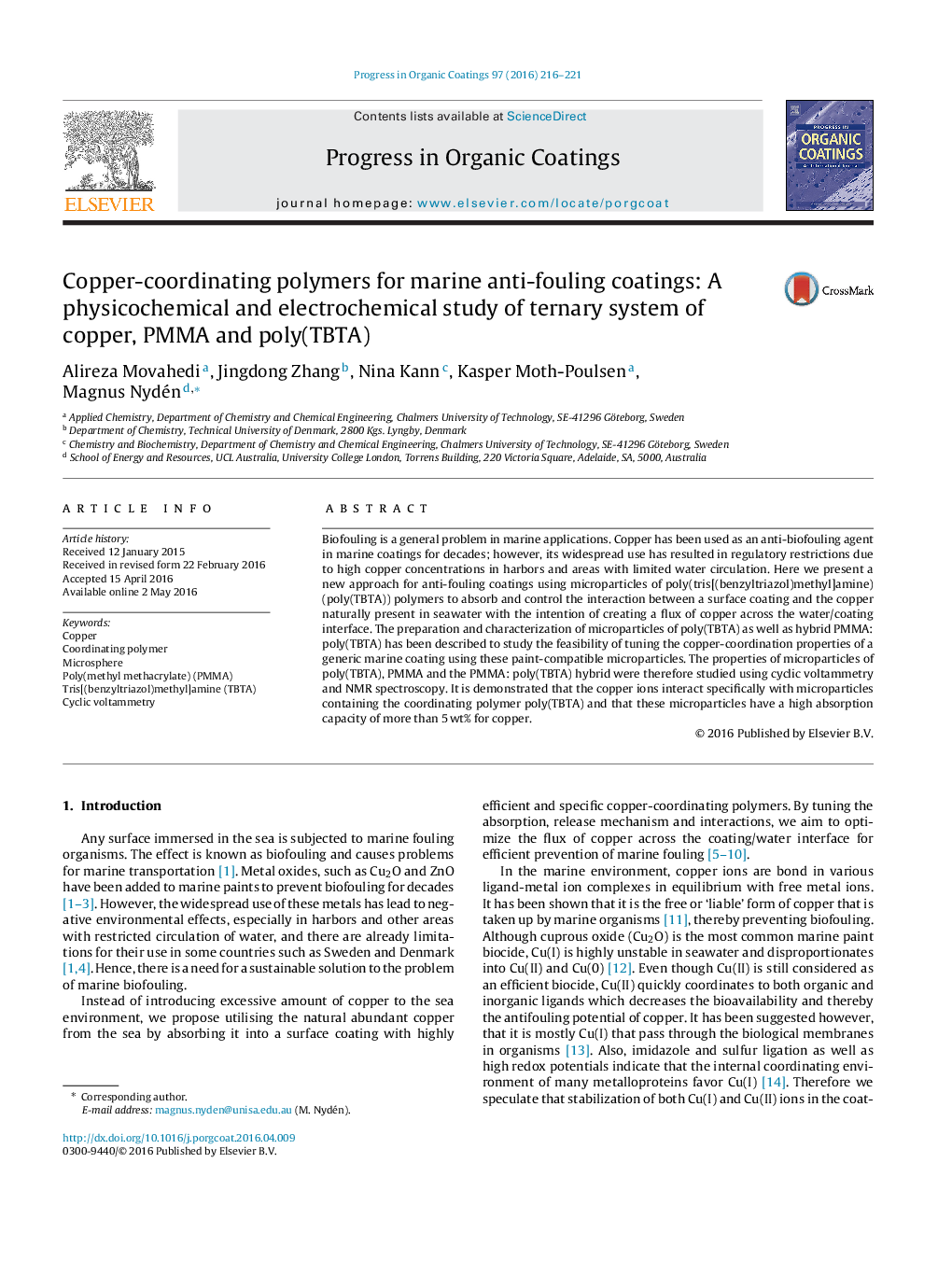| Article ID | Journal | Published Year | Pages | File Type |
|---|---|---|---|---|
| 692150 | Progress in Organic Coatings | 2016 | 6 Pages |
Abstract
Biofouling is a general problem in marine applications. Copper has been used as an anti-biofouling agent in marine coatings for decades; however, its widespread use has resulted in regulatory restrictions due to high copper concentrations in harbors and areas with limited water circulation. Here we present a new approach for anti-fouling coatings using microparticles of poly(tris[(benzyltriazol)methyl]amine) (poly(TBTA)) polymers to absorb and control the interaction between a surface coating and the copper naturally present in seawater with the intention of creating a flux of copper across the water/coating interface. The preparation and characterization of microparticles of poly(TBTA) as well as hybrid PMMA: poly(TBTA) has been described to study the feasibility of tuning the copper-coordination properties of a generic marine coating using these paint-compatible microparticles. The properties of microparticles of poly(TBTA), PMMA and the PMMA: poly(TBTA) hybrid were therefore studied using cyclic voltammetry and NMR spectroscopy. It is demonstrated that the copper ions interact specifically with microparticles containing the coordinating polymer poly(TBTA) and that these microparticles have a high absorption capacity of more than 5Â wt% for copper.
Related Topics
Physical Sciences and Engineering
Chemical Engineering
Process Chemistry and Technology
Authors
Alireza Movahedi, Jingdong Zhang, Nina Kann, Kasper Moth-Poulsen, Magnus Nydén,
